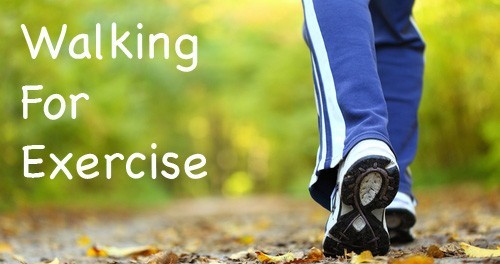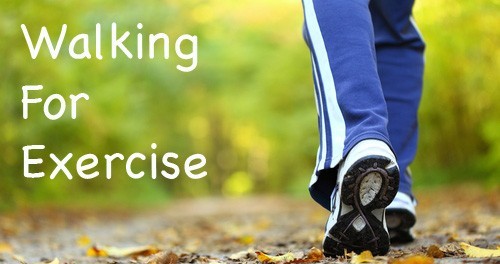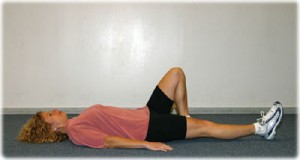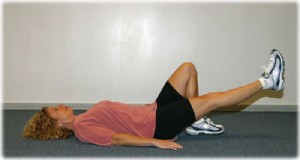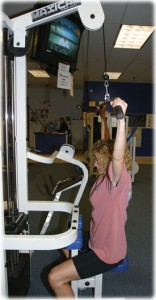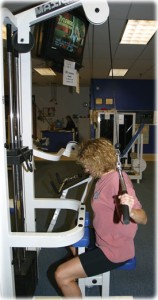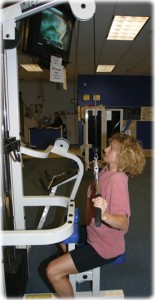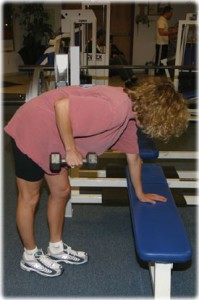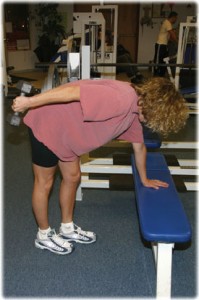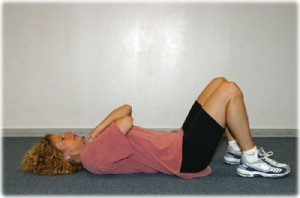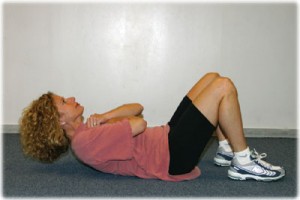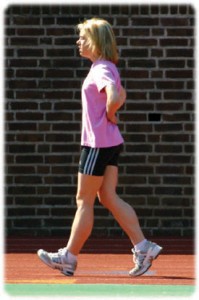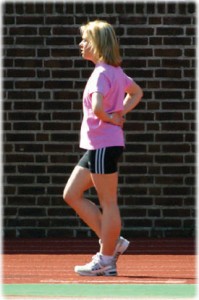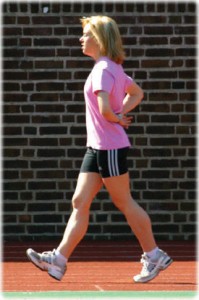Walk Talk Series
Day 66 – Training for Speed Part 2 Drills and Routines
Affirmation of the Day
I awake each morning excited to begin a fresh new day. Each day is a new opportunity for me to embark on. I welcome today’s events joyously.
Today’s Walk: Fat Burning Walk
- 45-90 minute walk in the fat-burning zone at 60-70% of your maximum heart rate
- Warm up with 5 minutes at a very easy pace
- Find a safe spot with a wall or pole to do a 5 minute easy stretching routine
- Now resume your walk at a comfortable pace
- End with 5 minutes of gentle stretching
Advanced walkers: Threshold Walk
Exercise: Strength Training
Cross training – Strength Training
The single best form of cross training for race walkers is strength training. Research indicates that endurance athletes improve their race times more rapidly when they add strength training to their conditioning plans. For race walkers and others concerned with speed and stamina, the key to maximizing performance is enhancing strength without dramatically increasing weight and bulk. To prevent such bulking up or enlarging muscle mass when training with weights, these exercises rely on light weights lifted through numerous repetitions.
Sets, Repeats, and Circuit Training
Strength training workouts are generally performed in sets, or repetitions of one particular exercise. Each repetition involves raising and lowering a specific weight through a predetermined range of motion. The following workouts typically require completing 10 to 15 repetitions of each exercise per set, for a total of three sets.
When performing strength training exercises one limb at a time, always begin each set with the weaker limb first. Attempt only as many repetitions with the stronger limb as you complete with the weaker one. This prevents any imbalance from growing worse.
Shin Exercises Probably the single easiest way to strengthen your shins is to walk on your heels.
Steps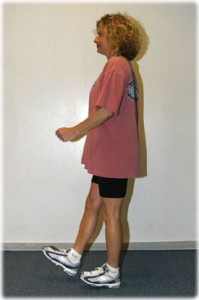
Walk slowly, with a stride of no more than six inches. Remember, it’s not a race.
Focus on how high you point your toes. The higher you point them, the better and more intensely you work your shins.
Maintain this technique for 25 yards.
If your shins can’t handle this distance, stop walking on your heels briefly and stretch out your shins. Once you stretch properly, resume heel-walking the remainder of the 25 yards.
Upon completion, always stretch out the shins completely; you will feel happy you did so later.
Strengthening muscles involves balance. While athletes often focus on their shins, they neglect their complementary muscles, the calves. Similar to the shin exercise, by slowly walking on your toes, you strengthen your calves.
Steps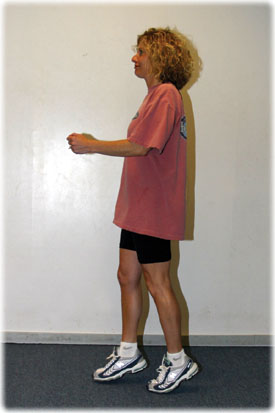
Walk slowly, with a stride of no more than 6 inches. Remember, it’s not a race.
As you walk, focus on keeping your heels as high off the ground as possible.
Walk this way for about 25 yards.
If your calves tire quickly, stop walking on your toes briefly and stretch your calves a little. Then complete the rest of the exercise. If 25 yards feels really easy, try to go a little further.
Once you finish the exercise, it’s always a good idea to stretch the calves completely
This exercise can be done with or without a light ankle weight. Start without weight and gradually add light weights, building up to but never exceeding 10% of your body weight.
Steps
Start by lying on your back and supporting your body by bending one leg as shown.
Extend the other leg out straight.
Slowly raise the straight leg to about 45 degrees; hold it there for a second, and then gradually lower it.
Steps
- Sit firmly in the seat provided.
- Adjust the support bar so you do not rise out of the seat as you pull the weight down.
- Grab the bar with palms facing outwards, and place your hands near the outer portion of the bar.
- Pull the bar down behind your head to about shoulder height.
- Return the bar back to start, stopping just before your arms completely straighten.
Options: A variation of this exercise involves pulling the bar in front of your body to about mid-chest height. If you have time, perform both exercises. If time is limited, select one or alternate between the two.
 Specificity of exercise, specificity of exercise, specificity of exercise: a maxim I keep driving into your head. The single best arm exercise for race walking is practicing the motion of the race walker’s arm swings with small, light arm weights.
Specificity of exercise, specificity of exercise, specificity of exercise: a maxim I keep driving into your head. The single best arm exercise for race walking is practicing the motion of the race walker’s arm swings with small, light arm weights.
Steps
- Swing the hands back and forth through the full range of motion traveled while race walking.
- Counter your arm swing by pushing your opposite hip forward.
- Remember to keep those shoulders relaxed!
Steps
-
With your feet a shoulder’s width apart, hold each dumbbell at your side using an underhanded grip. Start with the dumbbell perpendicular to the side of body.
-
Rotating the dumbbell 90 degrees, raise it as shown. While you raise the dumbbell, your elbow rotates as the dumbbell rotates; however, its position relative to your body does not change.
-
Once you completely raise the first dumbbell, simultaneously lower it as you raise the other one. One dumbbell’s movement mirrors the other. As one lowers the other raises and visa versa. Since you exert effort at all times, remember to breathe constantly
Keep control while raising and lowering the weight. Don’t bounce with the weights. It’s easy to throw your back out if you lift too much or cheat by using your back muscles.
Steps
- Bend at the waist as shown and place one hand on a bench for support.
- Keep your back straight and parallel to the ground.
- With your legs one shoulder’s width apart, hold your upper arm parallel to your back and your lower arm perpendicular to the ground.
- Exhaling as you lift the weight, straighten your arm so that it becomes parallel to the ground.
- Inhale while you return the weight to starting position.
Steps
- Start by laying down on a firm surface.
- Bend your knees and bring both feet towards your buttocks, so your legs form a triangle with the ground.
- Place your hands across your chest, and begin to curl upwards by tucking your chin to your chest.
- Slowly roll your upper body off the ground, pressing your lower back to the ground as you curl.
- Always exhale while curling your body upwards
- Lower your body to its original position by reversing your movements and inhaling as your body lowers to the ground.
- Repeat the exercise as many times as possible, but only as long as you maintain good technique. When you reach 100 repeats, stop.
Fast Walking Drills
Within your walking training week you will want to incorporate some speed drills, some sustained faster walking, and also some good long, slower walking. Your body needs time to recover, build new muscle, create blood vessels to nourish your muscle and mitrochondria to power them. A drill is an exercise you do for a short duration. A workout is a walking session of 30 minutes or more.
Quick
Quick Step Drill
All workouts start by warming up. Stretching does not warm you up. While you could walk slowly to get the blood pumping, instead perform this drill. Drills get the blood flowing, warm up the muscles. Repeated practice of these drills prevents injuries and improves your race walking technique. Quick steps with a powerful push off are the key to walking faster without wasted motion
There are a great many benefits to this drill. Aside from the merits listed above, it also makes a great final warm-up.
Steps:
1. Race walk with normal technique, except place the hands behind the back and walk with very short strides (12 inches or less).
- Begin with at least 5 minutes of slow walking
- Perform the drill for 30-40 seconds.
- Do several repetitions
- Take very short, fast steps for a distance of 20 to 30 meters
- Walk with an extremely short stride, the heel landing almost on top of the toes of the other foot
- This drill teaches quick turnover, the key to walking faster
Back Leg Extension Drill
- Begin with at least 5 minutes of slow walking
- Perform the drill for 30-40 seconds.
- Do several repetitions
- Walk concentrating on a long extension behind you.
- Apply a slight forward lean
- Focus on rolling off the toes of the back foot before the foot leaves the ground
- This drill teaches you to use your back leg for power rather than overextending in front
 Speed Workouts
Speed Workouts
Economy Workout
This workout trains your muscles to expect you to want to go really fast at times. It uses short bouts of walking as fast as you can for 30 seconds, slow for 2 minutes, repeat 8-12 times. It should only be done once per week.
- Warm up for 10-20 minutes at an easy pace, stretch and do flexibility exercises
- Take off at a moderate pace for 2 minutes
- After 2 minutes, speed up to walk as fast as you can for 200 meters/yards
- Slow to a moderate pace for 200 meters/yards (about 2 city blocks)
- Speed up again for 200 meters as fast as you can
- Repeat this 8-12 times Finish with 10-20 minutes of easy walking, followed by stretching
Threshold Workouts
Threshold workouts bring your body up to the anaerobic threshold at 80-90% of your maximum heart rate. These get you and your body used to high performance. You should do 2 threshold workouts per week.
 Threshold Workout #1 – Speed
Threshold Workout #1 – Speed
- 10 minute warm up at easy walking pace, followed by stretching and flexibility exercises.
- Walk fast for 8 minutes or 1 kilometer at 85-92% of your max heart rate.
- Then slow down to an easy pace for 2 minutes.
- Repeat this for 3-4 repetitions.
- Cool down for 10 minutes at an easy pace.
The threshold pace is strenuous, but one you could maintain throughout a 10 kilometer/6 mile race. You will be breathing very hard and able to speak only in short phrases
Threshold Workout #2 – Steady State or Tempo
- Warm up for 10 minutes at an easy pace, followed by stretching and flexibility exercises
- Walk 20-30 minutes at 85% of your max heart rate
- You will be breathing very hard and able to speak only in short phrases
- Cool down with 10 minutes easy pace
Speed Workout Schedule
This weekly suggested schedule, is for every kind of walker, including fitness walkers and racewalkers. You can mix and match the workouts below. The week should include one day of Economy workouts to build speed, two days of Threshold workouts to build aerobic performance, and one day of long distance. In between each of these workouts should be a rest day or a day of easy walking.
The key to these workouts is not to exceed your lactate threshold – working out so hard and long that your body builds up lactic acid in the muscles. This occurs when you workout at 90% or more of your maximum heart rate for more than 50 minutes. By knowing your Maximum Heart Rate and using a heart rate monitor, you can ensure that you are working out at the right pace for the various workouts.
Monday: Rest day. No walking of significant distance or intensity.
Tuesday: Economy Workout. Warm up for 10 minutes at an easy pace. Then walk as fast as you can for 30 seconds or 200 meters (two city blocks in most cities). After 30 seconds, drop down to an easy pace for 2 minutes. Repeat the 30 seconds speed/2 minutes rest 8-12 times. Cool down with a 10 minute easy pace walk.
Wednesday: Recovery. Easy 3 mile walk at 65-70% of your max heart rate. This is a pace at which you can easily maintain a conversation but are breathing harder than at rest.
 Thursday: Threshold Workout #1 – Speed. 10 minute warm up at easy walking pace. Walk fast for 8 minutes or 1 kilometer at 85-92% of your max heart rate. Then slow down to an easy pace for 2 minutes. Repeat this for 3-4 repetitions. Cool down for 10 minutes at an easy pace. The threshold pace is strenuous, but one you could maintain throughout a 10 kilometer/6 mile race. You will be breathing very hard and able to speak only in short phrases.
Thursday: Threshold Workout #1 – Speed. 10 minute warm up at easy walking pace. Walk fast for 8 minutes or 1 kilometer at 85-92% of your max heart rate. Then slow down to an easy pace for 2 minutes. Repeat this for 3-4 repetitions. Cool down for 10 minutes at an easy pace. The threshold pace is strenuous, but one you could maintain throughout a 10 kilometer/6 mile race. You will be breathing very hard and able to speak only in short phrases.
Friday: Recovery. Easy 3 mile walk at 65-70% of your max heart rate.
Saturday: Threshold Workout #2: Steady state or tempo workout. Warm up for 10 minutes at an easy pace. Walk 20-30 minutes at 85% of your max heart rate then cool down with 10 minutes easy pace.
Sunday: Distance Workout. 8-12 kilometers (5-7 miles) at 70-75% of your max heart rate. This is a conversational pace.
This variety of workouts will ensure you get slow fat-burning workouts, aerobic carbo-burning workouts that also build and feed your muscles, and avoid overtraining and anaerobic workouts.
Keeping a Training Log 
Perhaps the single best tool to monitor your training is a daily log. A log also teaches you about your body’s response to various training factors.
Your training log must describe all aspects of your workout. Start with the distance and pace of your race walk. For an interval workout, list your splits. Also, record average and maximum heart rates for each interval. Finally, documenting your body’s response provides useful information down the line: did it feel very easy, painfully hard, or somewhat mixed? One good system involves rating your perceived exertion level for each workout by indicating a number from one to ten.
Another good habit: note the length (hours) and quality of how you slept. When you suddenly feel run down and don’t seem to have any “zip” in your workouts, use your log to determine the possible cause: training too hard, or not getting enough sleep.

